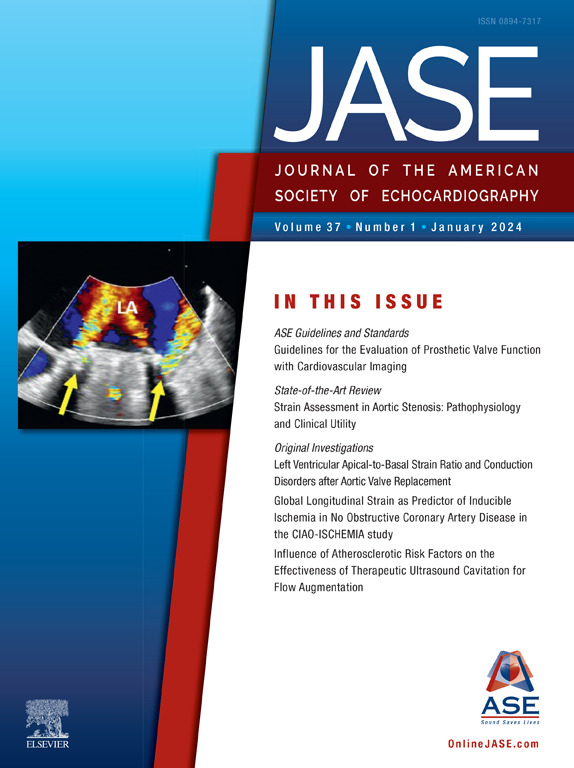术中经食管超声心动图诊断急性A型主动脉夹层:当代方法。
IF 5.4
2区 医学
Q1 CARDIAC & CARDIOVASCULAR SYSTEMS
Journal of the American Society of Echocardiography
Pub Date : 2025-06-01
DOI:10.1016/j.echo.2025.03.017
引用次数: 0
摘要
急性A型主动脉夹层是一种严重的心脏外科急诊,具有显著的死亡风险。虽然计算机断层血管造影是初步诊断的标准,但经食管超声心动图(TEE)在术中也是不可或缺的。本文讨论了A型主动脉夹层手术患者术中TEE的表现,强调实时成像对发现并发症和指导手术处理的必要性。TEE的使用在确认诊断、监测血流动力学、评估主动脉瓣、心包和胸膜间隙的功能以及潜在的评估腹部分支血管流量方面具有重要意义,从而最终促进明智的手术决策。此外,术中TEE的使用可以区分真腔和假腔,并通过Seldinger技术促进中央主动脉插管引导。体外循环术后TEE用于评估手术结果,并在必要时指导进一步干预。本综述旨在传播超声心动图的基本见解,提倡在主动脉夹层手术治疗中提高TEE的认识和应用,以改善患者的预后。本文章由计算机程序翻译,如有差异,请以英文原文为准。
Intraoperative Transesophageal Echocardiography in Acute Type A Aortic Dissection: Contemporary Approach
Acute type A aortic dissection represents a critical cardiac surgical emergency and carries a significant mortality risk. While computed tomography angiography is the standard for initial diagnosis, transesophageal echocardiography (TEE) is indispensable in the intraoperative setting. This article discusses intraoperative TEE findings in patients undergoing surgery for type A aortic dissection, emphasizing the necessity of real-time imaging to detect complications and guide surgical management. The use of TEE is important in confirming diagnoses, monitoring hemodynamics, evaluating the function of the aortic valve, pericardial, and pleural spaces, and potentially assessing abdominal branch vessel flow, thus ultimately facilitating informed surgical decisions. Moreover, intraoperative TEE use enables differentiation between true and false lumens and facilitates central aortic cannulation guidance via the Seldinger technique. Post–cardiopulmonary bypass, TEE is used to assess surgical results and guide further interventions if necessary. This comprehensive review aims to disseminate essential echocardiographic insights, advocating for greater awareness and utilization of TEE in the surgical management of aortic dissection to improve patient outcomes.
求助全文
通过发布文献求助,成功后即可免费获取论文全文。
去求助
来源期刊
CiteScore
9.50
自引率
12.30%
发文量
257
审稿时长
66 days
期刊介绍:
The Journal of the American Society of Echocardiography(JASE) brings physicians and sonographers peer-reviewed original investigations and state-of-the-art review articles that cover conventional clinical applications of cardiovascular ultrasound, as well as newer techniques with emerging clinical applications. These include three-dimensional echocardiography, strain and strain rate methods for evaluating cardiac mechanics and interventional applications.

 求助内容:
求助内容: 应助结果提醒方式:
应助结果提醒方式:


